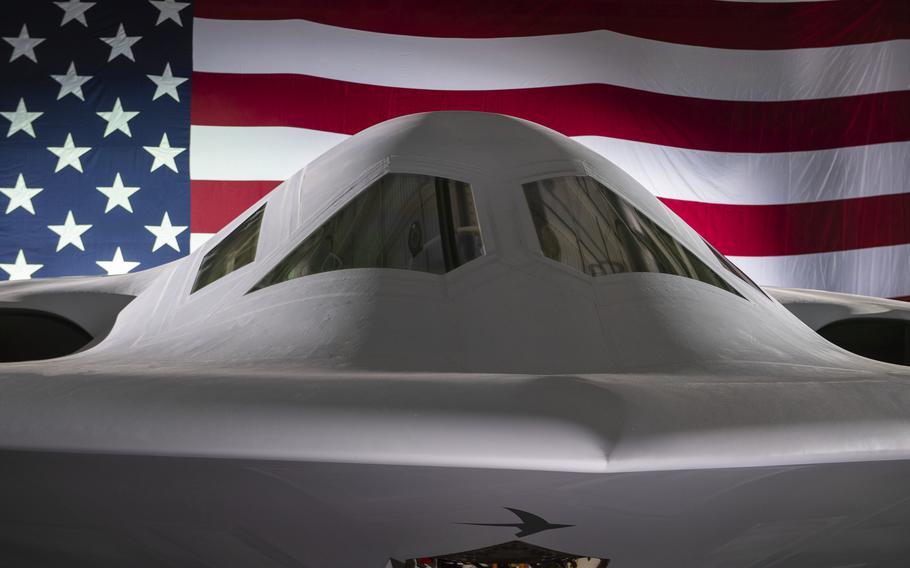
The B-21 Raider is unveiled during a ceremony in Palmdale, Calif., Dec. 2, 2022. (U.S. Air Force)
CAMP HUMPHREYS, South Korea — An Air Force stealth bomber that took its maiden flight last month is a “very serious” nuclear threat that demonstrates Washington’s willingness to carry out preemptive strikes, a North Korean newspaper reported Thursday.
The state-run Rodong Shinmun article described the B-21 Raider as having the capability to launch “an unexpected nuclear strike anywhere” and is an example of the United States placing its “nuclear preemptive strike tactics into practice.”
“In this instance, anyone can easily guess what it means for the U.S. to conduct a test flight of a new generation of stealth strategic bombers,” the report said.
The B-21 took its first test flight Nov. 10 in Palmdale, Calif. The sixth-generation nuclear-capable bomber developed by Northrop Grumman was designed to replace the B-1 Lancers and B-2 Spirits in the fleet, according to the Air Force’s website.
The aircraft was in development for over 30 years and is named after the Doolittle Raid, a World War II bombing mission led by Lt. Col. James Doolittle that struck Japanese industrial targets on April 18, 1942.
The Defense Department’s policy maintains that “the fundamental role of U.S. nuclear weapons is to deter nuclear attack,” according to its 2022 Nuclear Posture Review.
“The U.S. would only consider the use of nuclear weapons in extreme circumstances to defend the vital interests of the United States or its allies and partners,” the review states.
North Korea codified its “irreversible” and non-negotiable nuclear weapons program in September 2022. The law included a provision for a preemptive use of nuclear weapons and broadly says the regime may conduct a nuclear strike if its leaders or nuclear operations are threatened by hostile forces.
American bombers have appeared on and over the Korean Peninsula throughout the year.
On Oct. 17, a nuclear-capable B-52H Stratofortress became the first bomber of its type to land on South Korean soil in at least 30 years. Five days later, the bomber flew alongside fighter jets from South Korea and Japan, marking the first aerial drill between the three nations.
A B-52H flew alongside U.S. F-16 Fighting Falcons and South Korean F-15K Slam Eagles during an escort drill over the peninsula on July 13, a day after North Korea fired a solid-fueled intercontinental ballistic missile.
Washington, Seoul and Tokyo have pledged to continue working together to deter Pyongyang from conducting nuclear and ballistic missile tests.
The communist regime has fired 22 ballistic missiles in 15 days of testing so far this year.